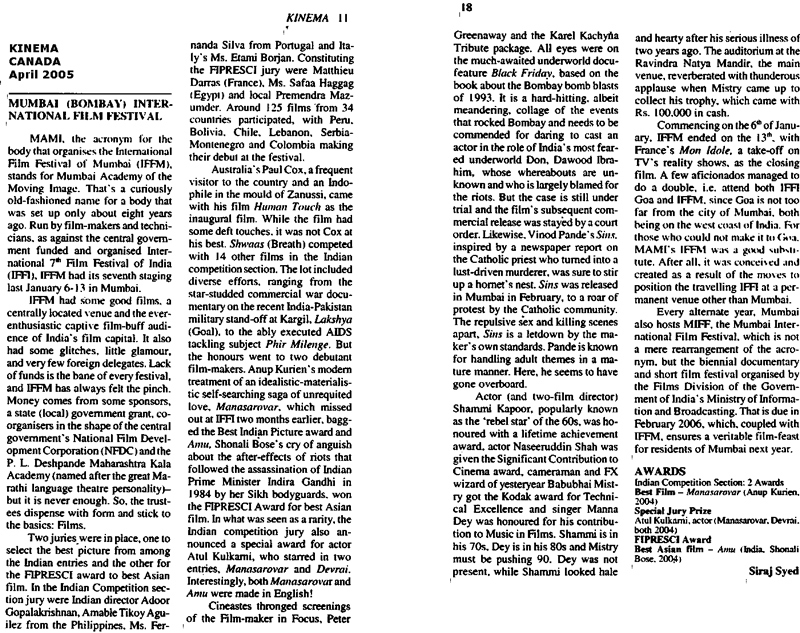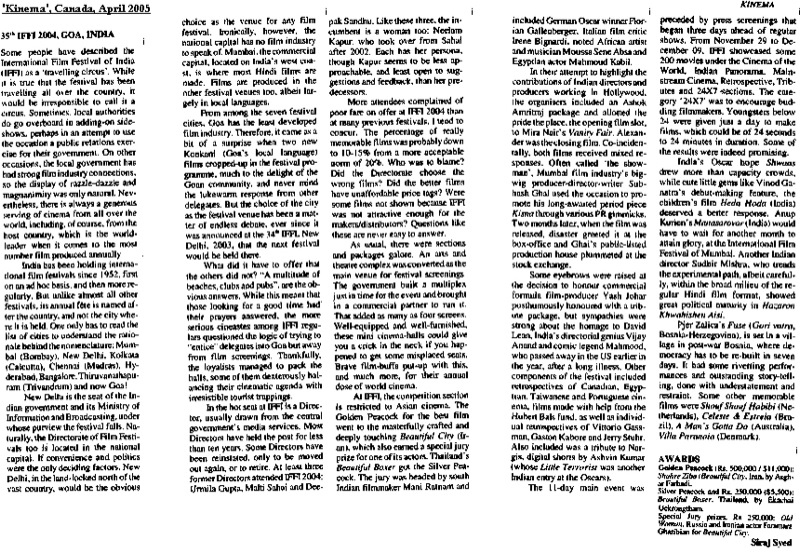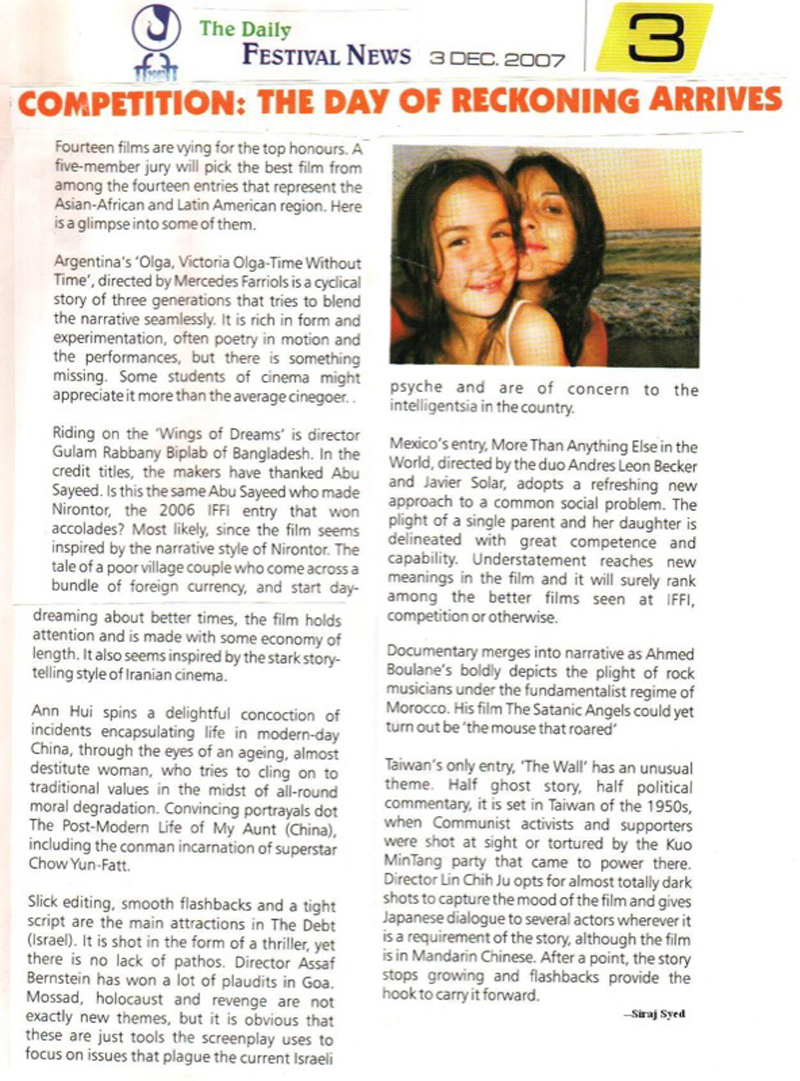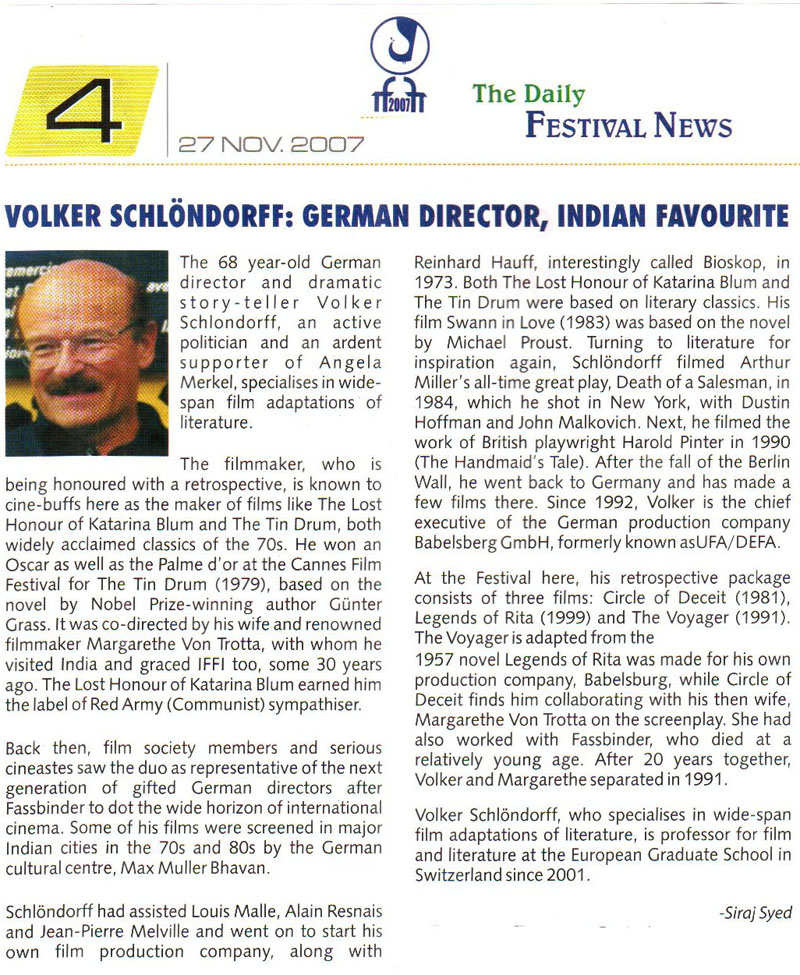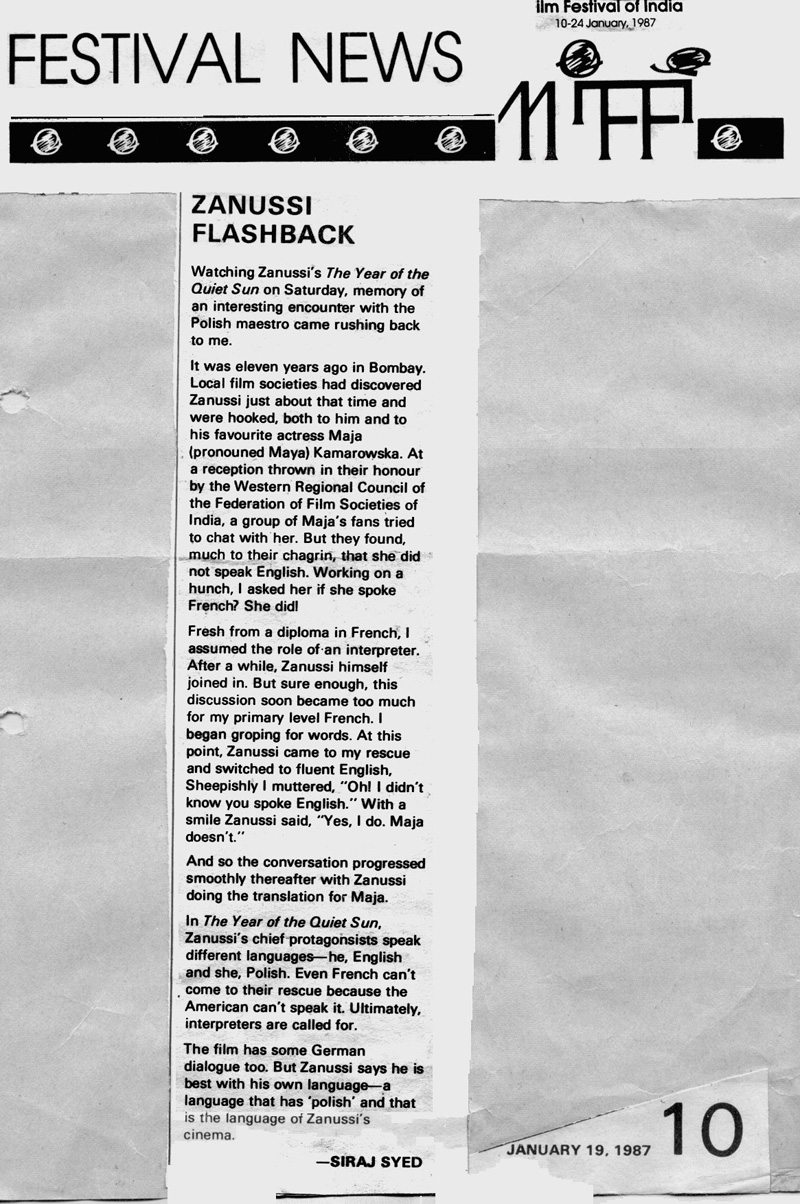|
|
||
|
Pro Tools
FILMFESTIVALS | 24/7 world wide coverageWelcome ! Enjoy the best of both worlds: Film & Festival News, exploring the best of the film festivals community. Launched in 1995, relentlessly connecting films to festivals, documenting and promoting festivals worldwide. Working on an upgrade soon. For collaboration, editorial contributions, or publicity, please send us an email here. User login |
Bhopal--A Prayer for Rain, Review: In vain
Mass deaths and long-term disabilities, going into the next generation as well, due to poisonous gas leak from the Union Carbide pesticide plant in Bhopal 30 years ago constituted the worst industrial disaster in history. It also led to bitter wrangling over liability, compensation and rehabilitation, amid accusations of sell-outs and cover-ups. Warren Anderson, the head of the American company, was largely perceived as the man responsible for the situation and answerable to the tens of thousands Bhopalites affected. He died in September 2014, aged 92, unpunished. Three months after his death, the film Bhopal: A Prayer for Rain, which was started four years ago, finds release in India. The film, made, reportedly, on a US $6-12 million (approx. Rs 28-56 crores) budget, dramatises the events leading up to the tragedy on the night of December 2/3, 1984, when plumes of toxic Methyl Iso Cyanate (MIC) and other deadly gases leaked from the Union Carbide factory, killing or maiming up to 30,000 persons and an unspecified number of animals. Unfortunately, Bhopalis and film-buffs alike will find Bhopal—A Prayer for Rain a prayer unanswered. A June 2010 news item in an Indian publication, edited, reads: Hollywood star Martin Sheen's upcoming film on the Bhopal gas tragedy has come under attack from several NGOs and campaigners in the city. "It's a terrible film," says Rachna Dhingra of the International Campaign for Justice in Bhopal. Director Ravi Kumar, on his part, claims: "My film is fictional and is inspired by real events and characters. But the technical and medical facts are authentic and based on interviews of victims and the Carbide staff." Ravi Kumar has claimed that "a new generation will learn about what happened" in Bhopal from his film. Satinath Sarangi, the managing trustee of the Bhopal-based Sambhavna Clinic that has been helping the victims over the years, has slammed the film, saying residents of the city have been represented wrongly. He claims that "not even a single Bhopali is shown with upright moral standards" in the movie. How can we be happy with such a film? It makes fun of the people of Bhopal, shows them as corrupt and portrays them as work- shirkers. Several respected people such as senior journalist Raj Kumar Keswani are depicted in an objectionable manner," Sarangi says. To be fair, both Dhingra and Sarangi have valid reasons for their views. Kumar, a little-known film-maker despite having made three films before Bhopal, is also a trained pediatrician. He was born and raised in Bhopal, but settled in London, many years ago. He made his first short film in 1999. It was while reading Sanjoy Hazarika’s thriller, Bhopal: Lessons of a Gas Tragedy, in 2004, that he got the idea for writing this story, which took four years to become a film. It was shot over an 18-month schedule across Mumbai, Hyderabad and the Union Carbide factory in Bhopal. The story revolves around Dilip Kumar (Rajpal Yadav), a rickshaw-driver and later a low-wage worker at Union Carbide, his Leela (Tannishtha Chatterjee) and his baby son. Martin Sheen is cast as “the delusional and hardworking” Union Carbide CEO (sometimes referred to in the film as ‘Chairman’), Warren Anderson, while Mischa Barton plays French journalist Eva Gascon. Kal Penn portrays a real life local journalist, Motwani (in real-life, he was called Rajkumar Keswani), who writes provocative articles about an impending disaster at the plant. Penn, real name Kalpen Suresh Modi, was born in the USA, was seen in American Desi, National Lampoon's Van Wilder and Harold and Kumar, as well as on the television shows House and 24. In 2009, Penn entered public service as President Barack Obama's associate director of the White House Office of Public Engagement. As Motwani, he fails to engage the audience. Whether a lot of compromises have been made along the way or the film has been mauled at the editing table, it is amateurish and meandering for most part. A subject of such universal magnitude needed much more maturity of handling and a clear, researched, stand. If it was not possible to dig out facts and frame them squarely, there was little point in attempting the film. As it stands, it just does not work, neither as a docu-drama nor as a work of fiction. Technical aspects at the factory are either explained in technical detail or in over-simplified terms, both approaches being ineffective. Incomplete characters (Barton, Akhil Mishra as Napoleon in a side-track, Vineet as the Indian ‘villain’, Manoj Joshi as a doctor, Satish Kaushik as a politician), some hamming performances (Sheen for one, though he does have a couple of impressive scenes) and some non-performances (Penn, with an unpardonable accent and lost look) are another major handicap. Thank God a couple of actors (Yadav, Chatterjee) add subtlety. Of course, there are several moments that will tug deep down your heart and the scenes of disaster are well captured. In terms of cinema, sadly, it is more a case of drought than rain. Rating: ** Trailer: https://www.youtube.com/watch?v=znvcQBua--w Rajkumar Keswani’s Rapat on the impending disaster (Source: Sambhavna Documentation Center, translated from Hindi, 2005). RAPAT WEEKLY Issue 2 year 5 Bhopal Friday 1 October 1982 60 Paise BHOPAL SITTING AT THE EDGE OF A VOLCANO (Excerpts) Bhopal a pile of dead humans in one to one-and-a-half hour Wake up people of Bhopal, sitting at the edge of a volcano. No saviour will save you from this foreign death. Those who used to talk about our rights have pawned their voice and those who could relieve us from this misery are themselves in chains in golden cages that were made for parrots. Union Carbide’s Phosgene storage tank laughs at the fate of Bhopal. Union Carbide established the demon MIC plant in 1980 after obtaining its license in 1977 and it has played with many lives since then. Some time back, 24 people were hanging between life and death due to Phosgene leak, and after suffering for several months, are back, fighting death to earn their bread. In 1967 – 68 when Union Carbide was established, the site of the factory was outside the municipal limits. The area later was brought within the municipal limits, and in 1975, the then Administrator of the Municipal Corporation, Mr. Mahesh Neelkanth Buch served a notice on Carbide, asking them to relocate their factory outside the municipal limits. Before Mr. Buch could take any steps, because of the strong ‘fate line’ (as in palmistry) of Carbide, he was transferred, and the matter was buried, and at the same time, as per a deal, the General Manager of Carbide, at the time Mr. C S Ram, donated a sum of 25,000 Rupees to build the Vardhaman Park. Thus the notice was sent to the freezer. This matter dates back to 1977, when the erection of the MIC plant began, and to 1980, when the plant started operations. Prior to this, this chemical used to come from the corporation’s plant in the USA. Accidents began in the plant from the time it started. Many accidents were covered up. On December 26, 1981, Mohammed Ashraf was killed due to leakage of Phosgene gas while he was working in the Carbon Monoxide plant. The four feet wide, six and half feet long, Phosgene Storage Tank, built with steel, contains 460 gallons of gas, at any given time. According to experts, it is quite possible that the gas is corroding the tank from inside, and there is no way to know. The city will perish for sure, and there is no power that can save the people of this city. Anderson, Union Carbide and Dow Chemicals Son of an immigrant Swedish carpenter, Warren Martin Anderson was born in 1921, and after graduating in 1942, he joined the US navy to train as a fighter pilot. Joining Union Carbide after the war, he started as a salesman, acquired a second degree in law (the first was in chemistry), and worked his way steadily upwards through the management ranks, running factory operations at home and abroad. Following the Bhopal tragedy, Union Carbide (now a subsidiary of the Dow Chemical group) settled all Indian litigation against it for a payment of $470 million in 1989 (considered peanuts by the victims/recipients), and sold its remaining Indian assets to fund the building of a hospital at Bhopal; seven of its Indian employees were eventually convicted of causing death by negligence, serving short jail sentences. Dow Chemicals accepts no liability at all. 05.12.2014 | Siraj Syed's blog Cat. : Bhopal Industrial disaster Kal Penn Martin Sheen MIC Mischa Barton Rajpal Yadav Satish Kaushik Tannishtha Chatterjee Warren Anderson Independent
|
LinksThe Bulletin Board > The Bulletin Board Blog Following News Interview with IFTA Chairman (AFM)
Interview with Cannes Marche du Film Director
Filmfestivals.com dailies live coverage from > Live from India
Useful links for the indies: > Big files transfer
+ SUBSCRIBE to the weekly Newsletter Deals+ Special offers and discounts from filmfestivals.com Selected fun offers
> Bonus Casino
User imagesAbout Siraj Syed Syed Siraj Syed Siraj (Siraj Associates) Siraj Syed is a film-critic since 1970 and a Former President of the Freelance Film Journalists' Combine of India.He is the India Correspondent of FilmFestivals.com and a member of FIPRESCI, the international Federation of Film Critics, Munich, GermanySiraj Syed has contributed over 1,015 articles on cinema, international film festivals, conventions, exhibitions, etc., most recently, at IFFI (Goa), MIFF (Mumbai), MFF/MAMI (Mumbai) and CommunicAsia (Singapore). He often edits film festival daily bulletins.He is also an actor and a dubbing artiste. Further, he has been teaching media, acting and dubbing at over 30 institutes in India and Singapore, since 1984.View my profile Send me a message The EditorUser contributions |

















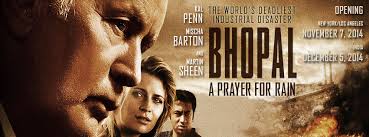 Bhopal--A Prayer for Rain, Review: In vain
Bhopal--A Prayer for Rain, Review: In vain
